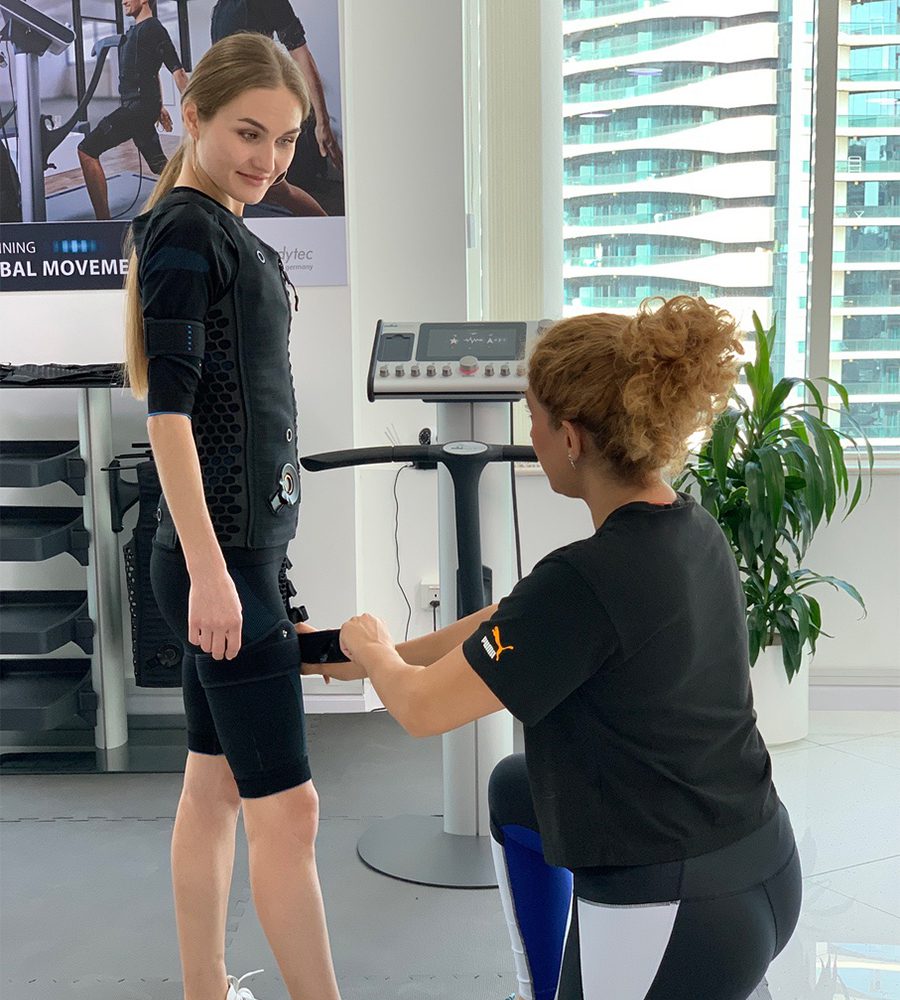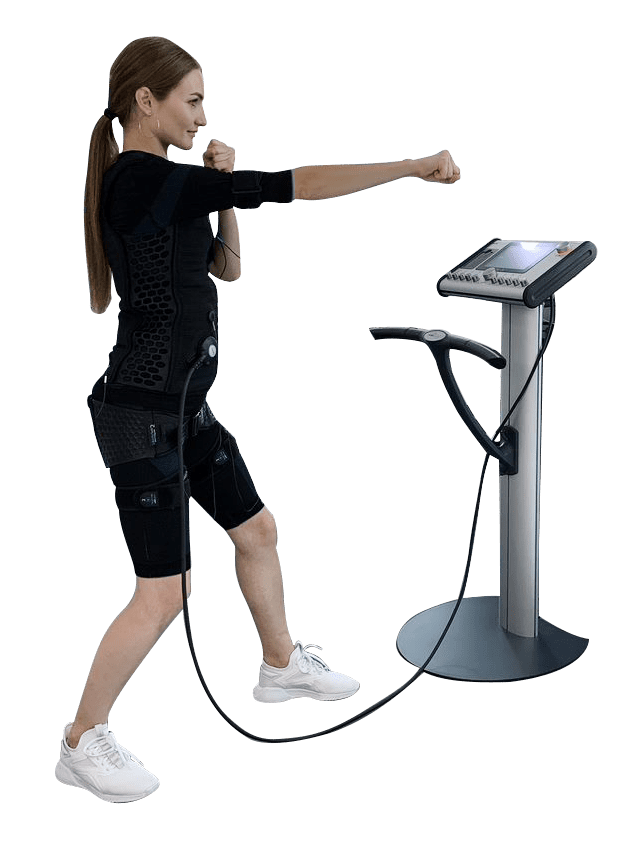
EMS Movement
The new sport art and lifestyle of effectively training your body and minimizing the time required.

The new sport art and lifestyle of effectively training your body and minimizing the time required.
EMS uses an electrical current to create controlled contractions deep into the muscles, which are similar to the messages sent by the central nervous system to muscles during a regular workout. Consider it a strength workout.
But there are no weights, which means you also avoid putting stress on joints, making it a lower-impact workout suitable for virtually anyone. Instead, you’re strapped into a vest (which is wet to aid conduction) with electrodes hooked up to each of your major muscle groups, on your arms, legs, glutes, abs and back.
The 20-minute session involves bodyweight exercises, like squats and holding the plank, while the electrodes stimulate muscle contractions every four seconds, for four seconds, followed by a four-second rest.

Too busy to exercise? A 20-minute EMS workout can offer the same results as a 90-minute high-intensity gym class. It is enough to do one or two weekly sessions which can also be added to your existing workout routine.
EMS is scientifically proven to be effective and safe by reputable sports institutions, and has been used by doctors, health clinics, physiotherapists and professional athletes for more than 50 years around the world.
EMS workouts engage up to 98% of your muscles, compared to the 60% you might use in the gym, and burn up to 500 kcal in just 20 minutes. Low-impact exercises ensure minimum stress on shoulders, back and knees.

EMS devices offer the same benefits as a high-intensity workout, but without the impact or stress on the joints.
Using electrical impulses, an EMS device does this by mimicking the natural signal sent by the brain to the muscles, but more powerfully. One 20-minute session, once per week, can activate up to 98 per cent of muscle fibres, compared to just 60 per cent in conventional training methods.For those older groups who may be new to exercise, EMS is a full-body, low impact workout using simple bodyweight movements that anyone can do.
